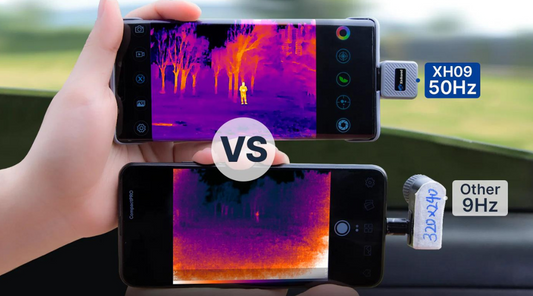Revealing the Invisible: How a Thermal Camera Can Uncover Your Home's Heat Loss
Do you ever wonder why your energy bills keep going up even though you haven't changed your heating habits? Or why some rooms in your house are always colder than others, even though you have a central heating system? The answer may lie in your home's heat loss, which is the amount of heat that escapes through walls, windows, and other areas that are not properly insulated.

Fortunately, you don't need to be an expert in thermodynamics to detect heat loss in your home. All you need is a thermal camera, which is a device that can capture images of heat radiation. With a thermal camera, you can identify areas of your home that are losing heat and take steps to fix the problem.
How does a thermal camera work?
A thermal camera detects infrared radiation, which is emitted by all objects that have a temperature above absolute zero (-273.15°C or -459.67°F). The camera then converts the infrared radiation into an image that shows the temperature of each object in the scene.
In a home, a thermal camera can be used to identify areas of heat loss by comparing the temperatures of different surfaces. For example, if the temperature of a wall is significantly lower than the temperature of the air in the room, it may indicate that the wall is not properly insulated.

What are the benefits of using a thermal camera?
Using a thermal camera to detect heat loss in your home has several benefits:
Identify problem areas: A thermal camera can help you identify areas of your home that are losing heat, even if they are not visible to the naked eye. This can include gaps around windows and doors, poorly insulated walls, and even hidden pipes and ductwork.
Save money on energy bills: By identifying and fixing areas of heat loss, you can reduce the amount of energy needed to heat your home, which can lead to lower energy bills.
Increase comfort: Fixing areas of heat loss can also improve the overall comfort of your home by reducing drafts and cold spots.
Improve indoor air quality: A thermal camera can also be used to detect areas of moisture, which can lead to mold growth and poor indoor air quality.

How to use a thermal camera to detect heat loss in your home?
Using a thermal camera to detect heat loss in your home is a relatively simple process. Here are the steps to follow:
Choose a day when the temperature outside is significantly colder than the temperature inside your home. This will make it easier to detect areas of heat loss.
Turn on your heating system to bring the temperature inside your home up to a comfortable level.

Turn off any lights or other sources of heat that could interfere with the readings from the thermal camera.
Walk around your home with the thermal camera and take images of different surfaces, including walls, ceilings, floors, windows, and doors.
Look for areas where the temperature is significantly lower than the surrounding area. These areas may indicate heat loss.
Take note of the problem areas and make a plan to fix them. This may include adding insulation, sealing gaps around windows and doors, or replacing old windows with more energy-efficient ones.
Conclusion
Using a thermal camera to detect heat loss in your home can help you identify areas of energy waste and take steps to fix the problem. By reducing heat loss, you can save money on energy bills, improve the comfort of your home, and even improve indoor air quality. So, the next time you're wondering why your energy bills keep going up, consider investing in a thermal camera to uncover the invisible problem of heat loss.




